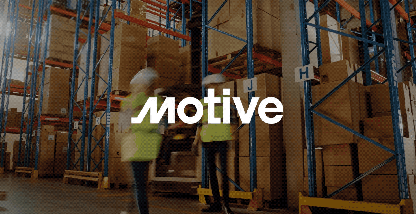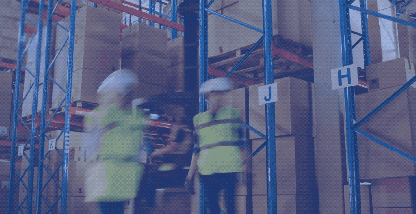After COVID-19 and a global shutdown left us with 2020 whiplash, we looked forward to catching our breath in 2021. Except 2021 brought another wild ride. How wild was it? Take a look as we recap the most impactful events in the commercial transportation industry this year.
Passage of the infrastructure bill inspired hope
When President Biden signed the $1.2 trillion infrastructure bill on November 15, transportation and construction professionals everywhere let out a sigh of relief. Billed as a “once in a generation” legislation, the new funding delivers $550 billion in federal infrastructure investments over five years. Along the way, it opens the door to safer roads and bridges, modernized public transit, broadband access in hard-to-reach areas, cleaner drinking water for local communities, and a bevy of new construction jobs.
Americans learned what the supply chain is and how it impacts them
In the last 12 months, the travel of goods into and out of U.S. ports and rail yards slowed to a crawl as surging demand encountered a crippled supply chain. From Singapore to Los Angeles, Shanghai to Savannah, a global shortage of materials caused prices to soar and building projects to be delayed. As ports and rail yards grappled with a lack of chassis to move containers, labor shortages in trucking and construction meant there weren’t enough workers to move freight or take on projects. 2021 was also dogged by a lack of warehouse capacity, the closing of Gulf Coast ports after Hurricane Ida, and the disruption of Texas logistics networks. So much supply chain disruption happened in 2021, we almost forgot about that debacle in the Suez Canal. Yeah, that happened this year.
Digital transformation led to more efficient operations
As images on the evening news hammered home a desperate need for rapid digital transformation to improve supply chain problems, fleets turned to “smart” technologies for help. Cargo tracking, vehicle gateways, automated warehousing, Bluetooth, and GPS. All of them helped make companies more productive and delivered real-time insights into asset status and location. Most recently, the nation’s second-largest seaport, the Port of Long Beach, put itself at the center of digitization, announcing its plans to provide digital, end-to-end visibility across transportation modes.
Diversity, equity, and inclusion was a focus, but not enough of one
As transportation companies have looked to improve DEI performance, some have found it difficult to know where to start. In June, U.S. Xpress President and CEO Eric Fuller published a letter in Freightwaves, calling on logistics leaders “to create a culture more accepting of others from different races, ethnicities, genders and sexual orientation.” Fuller said that though frontline and entry-level jobs in the commercial transportation industry reflect diversity, executive positions do not.
A report from the Society for Human Resource Management earlier this year acknowledged that “roughly 80% of companies are going through the motions [of DEI] and not holding themselves accountable.” According to the report, 76% of companies don’t have diversity or inclusion goals, and 75% don’t include DEI in the company’s leadership development.
As some organizations struggled to adapt, the Associated General Contractors of America (AGC) seemed to find a winning formula. Having launched its Culture of CARE curriculum in April 2020, it has now been adopted by more than 600 firms.
“The goal is to help firms create work environments where people feel they belong,” says Brian Turmail, AGC’s Vice President, Public Affairs and Strategic Initiatives. “Having awareness is step one to building a positive, more inclusive work environment that makes workers want to stay.” In a construction industry where 1 million workers are needed over the next two years, becoming more inclusive looks to be a vital part of the solution.
The Drug and Alcohol Clearinghouse made an impact
After the FMCSA Drug and Alcohol Clearinghouse went into effect on January 6, 2020, 56,000 drug and alcohol violations were recorded among commercial drivers in the first year. By the end of 2021, drug and alcohol violations had slowed. In the last two years combined, the number of drivers with at least one drug and alcohol violation stands at 95,876, and a total of 75,337 drivers have been prohibited from driving until they get treatment. The good news is, the pace of violations is easing, even as more drivers are registered in the clearinghouse than ever before (2.4 million of them).
Cybersecurity attacks soared
While Santa’s reaching for that plate of cookies this holiday season, thieves will be reaching for something more lucrative — sensitive data. Cyber threats in 2021 had a record-breaking year, and just when we thought they couldn’t get much worse, they did. According to the Forbes article “More Alarming Cybersecurity Stats for 2021,” published in late October, “the number of data breaches in 2021 has soared past that of 2020.” And guess what? We’re 238 breaches away from tying the single-year record.
Construction, an industry that largely has avoided regulation in data security and privacy laws, is now among the industries most impacted by data security incidents. Thieves are lured by a lucrative industry where e-payment portals and wire transfers are becoming common forms of payment. Increased reliance on automation creates more opportunities for theft and extortion too.
CCJ Digital reports that cyberthreats have skyrocketed in the commercial transportation industry since the start of the pandemic. “Nearly 30% of transportation and logistics organizations reported more than 20 supply chain disruptions via cyberattack last year,” the magazine writes. That’s up from just 4.8% reporting that many in 2019. Expect 2022 to bring a laser focus on cybersecurity as businesses look for innovative ways to protect themselves from crime. With autonomous vehicles coming in the future, finding a deterrent against cyber-attacks becomes all the more pressing.
The vaccine mandate, and commercial transportation industry suits
Companies with 100 or more employees are one step closer to having a federal vaccine mandate. On December 17, the Sixth Circuit Court of Appeals upheld a rule from the Occupational Health and Safety Administration (OSHA) that requires workers at mid-sized and large companies to either be vaccinated or undergo weekly testing. The court’s ruling will come as a disappointment to trucking associations and construction firms, who fear that a COVID-19 vaccine mandate will cause drivers and skilled craftspeople to leave their jobs and perhaps the industry.
OSHA, meanwhile, estimates that the vaccine mandate could save 6,500 lives and prevent 250,000 hospitalizations over a six-month period. No matter where businesses stand on the issue, they have until January 10 to implement the mandate. For now. This one looks to be headed to the U.S. Supreme Court. What will they do about it? Based on their most recent vaccine judgments, the mandate has a good chance of remaining in place.
Read next: 2023 commercial transportation predictions.







